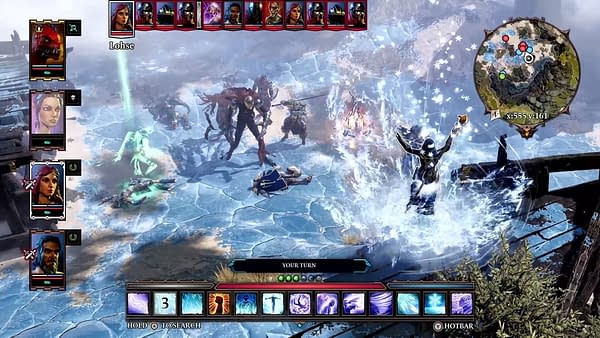

They are undermined by the ridiculously long cooldowns of the most effective spells (4 turn cooldown for a firebloy fireball basically means you can only use it once or twice a fight) and is made redundant by the fact that your physical-damage-dealers are doing twice as much damage in half the time, and with shorter cooldowns. Being a traditionalist I'd have assumed that pyromancy would be the big damage dealing build, and when combined with geomancy to create pools of poison and oil you can make some pretty great, albeit still not particularly powerful, aoe explosions. I haven't spent much time messing around with every school of magic but it seems the best are those that deal physical damage (Necromancy, polymorph, and summoning). Honestly, on harder difficulties it seems like mages are pretty much useless unless they're in a support role. As CC can't be applied until armour has been removed, it's almost always beneficial to have all the damage dealers in your party doing the same type of damage. This means, effectively, if you're hitting an enemy with both physical and magical attacks, neither will deal damage to HP until their respective armour has been chipped away.

However, the challenge posed by each new encounter is an absolute joy to experience.This is something that I've talked about with a few people trying to get a good understanding of different playstyles and builds, but even after doing a fair amount of research I can't find any mage build that does damage to rival any of the physical damage dealing classes, both single target and as AOE.įor those that have not yet played the game, armour has been split into independent physical and magical types. In fact, it gets exponentially more and more difficult. That isn't to say that this game ever becomes easy. Learning the ins-and-outs of the game is challenging at first, but with practice, you'll eventually get the hang of it. In many ways, this system is like a game of chess think two, three, five moves ahead, and you'll find more success against your foes. This forces you to evaluate the abilities of both yourself and your comrades and come up with plans and combinations that will maximize damage done to enemies, while also keeping yourself alive. In general, heavier attacks tend to cost more AP and have cooldowns, so spamming the same effective attack each turn is impossible. Using Action Points (AP) that regenerate each turn, both you and enemy forces duke it out on the battlefield. Sticking true to the Divinity series' Dungeons & Dragons-inspired mechanics, turn-based combat makes a return to the sequel - and it's better than ever. Enemies in Divinity: Original Sin 2 are disposed of via turn-based, tactical combat.


 0 kommentar(er)
0 kommentar(er)
